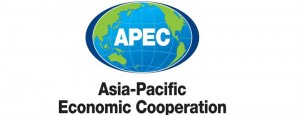
MANILA, Philippines – The Asia-Pacific Economic Cooperation (APEC) is not just a talk shop, Philippine organizer for APEC 2015, Foreign Affairs Undersecretary Laura del Rosario, said on Monday.
The APEC has been where ideas incubate, del Rosario said, citing two instances of the successful transformation of ideas into action: the recently negotiated Trans-Pacific Partnership (TPP) agreement that was introduced during APEC 2009, and the digital revolution that followed APEC 2010.
The TPP, a binding trade agreement that contains measures to lower trade barriers, such as tariffs, and establishes an investor-state dispute settlement mechanism, was introduced by United States President Barack Obama in APEC 2009, del Rosario said.
Twelve of the 21 APEC economies finalized the TPP last October 5, building on the 2005 formation called P4, composed of four APEC members — New Zealand, Brunei, Singapore, and Chile.
Later, Australia, Canada, Japan, Malaysia, Peru, the United States, and Vietnam joined to expand P4 into the TPP. In a recent visit to the US, Indonesian President Joko Widodo said his country intends to join the TPP formation.
On the other hand, the product innovation that saw the invention, manufacture, and sale of digital items like iPods came after Japan’s hosting of the APEC in 2010. In that conference, the Yokohama Vision, which emphasized innovation, was produced.
Del Rosario explained that the non-binding nature of the APEC can be advantageous because its discussions are at the level of principles and therefore less restrictive, unlike for instance in the stalled World Trade Organization negotiations.











Leave a Reply